(Ocean Robbins) I’ll begin with a simple definition: monocropping is planting and growing one type of plant in the same place, year after year. It’s the type of planting that occurs under a type of agriculture called monoculture. If you’ve ever driven through large agricultural fields completely filled with — say, corn — as far as the eye can see, you’re in monoculture country. Monoculture is an agricultural system that involves the planting of a single crop, over and over.
Related Walensky Admits Natural Immunity is Real, 95% of Americans Have ‘Some’ Protection Against Covid
Source – Food Revolution Network
by Ocean Robbins, March 18th, 2022
That cornfield was a cornfield last year, and the year before, and it will be a cornfield next year, and into the foreseeable future. It’s a monoculture because corn holds a monopoly on that field — no other crops allowed. Because monocultures typically exist at large scale, and can accommodate both conventional and organic farming, the vast majority of the agricultural yield in industrialized countries comes from monocultures.
The question is, why? It’s obvious that nature doesn’t monocrop. You’ll never see an area untouched by humans that is completely dominated by a single species of plant. Nature abhors not just a vacuum, but sameness. Biodiversity is the signature of a natural system.
To understand the reasons behind the global shift to monocultures, and why the agricultural sector has embraced it so wholeheartedly, we have to look at the Green Revolution of the 1960s, and the hopes of the scientists, policy makers, and farmers who were struggling with the twin scourges of poverty and starvation.
How Did Monocropping Come About?
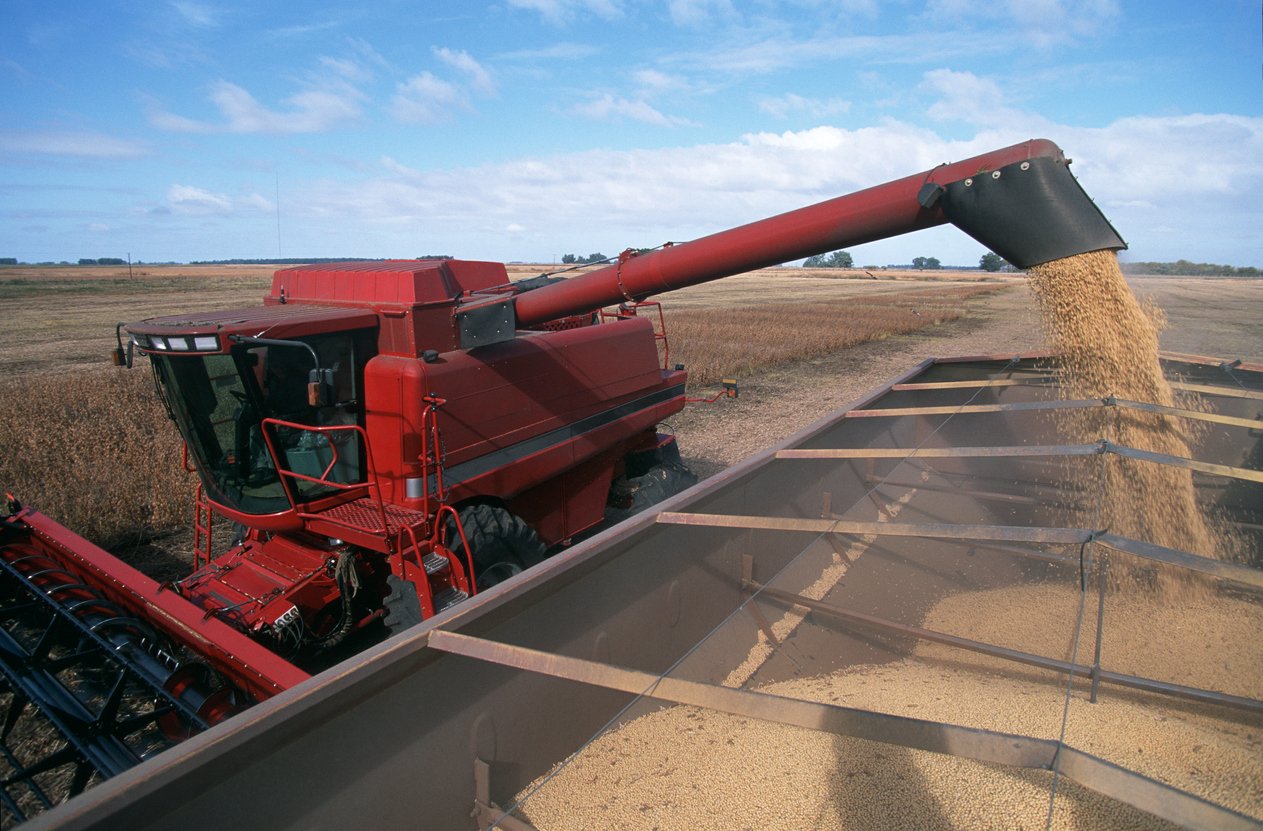
Monocropping was a cornerstone of a series of initiatives intended to address hunger throughout the world by increasing agricultural production. The plan was to develop a wide array of effective pesticides and herbicides, create and teach farmers to use new synthetic fertilizers, breed new and improved “high-yield varieties” (HYVs) of calorically dense crops, and mechanize farm equipment.
The thing that was going to make all of these innovations work was a shift in how agricultural land was used. Traditionally, subsistence farmers and smallholders planted a variety of crops, from grains to pulses to nuts to vegetables to fruits to herbs. But the new technologies and systems of mass production were only going to work, the thinking went, at a large scale.
The big machines were expensive and were designed to handle a specific crop. You don’t harvest wheat with the same equipment you use to harvest soybeans. Each crop required a custom application of biocides and fertilizers, as well. In order to get the most out of these technological advances, farming had to change from the workshop model to the factory model.
To replace biodiverse gardens and farms with industrial-sized agriculture, vast swaths of arable land were converted into single-crop use. That way, the farmers could use their new equipment and synthetic chemicals on new HYVs that were bred to tolerate the toxins and make the most of the fertilizers.
As a result, farms around the world increased in size, on average doubling the number of acres under cultivation, in order to produce more food with less labor. With a single farmer able to produce more food, the number of farmers and farm laborers decreased, as human inputs were replaced by machines and by chemicals, often delivered from the air. Over time, more and more farms relied solely on these high-yielding crops, in the form of monocropping, to increase yields and profits.
This logic led to vigorous efforts to bioengineer HYVs to produce heartier, faster-growing, and more resilient crops that define monoculture, rather than relying on trial and error or “natural” breeding.
Now, let’s look at some of the monoculture advantages and disadvantages for farmers.
Economic Advantages of Monocropping for Farmers
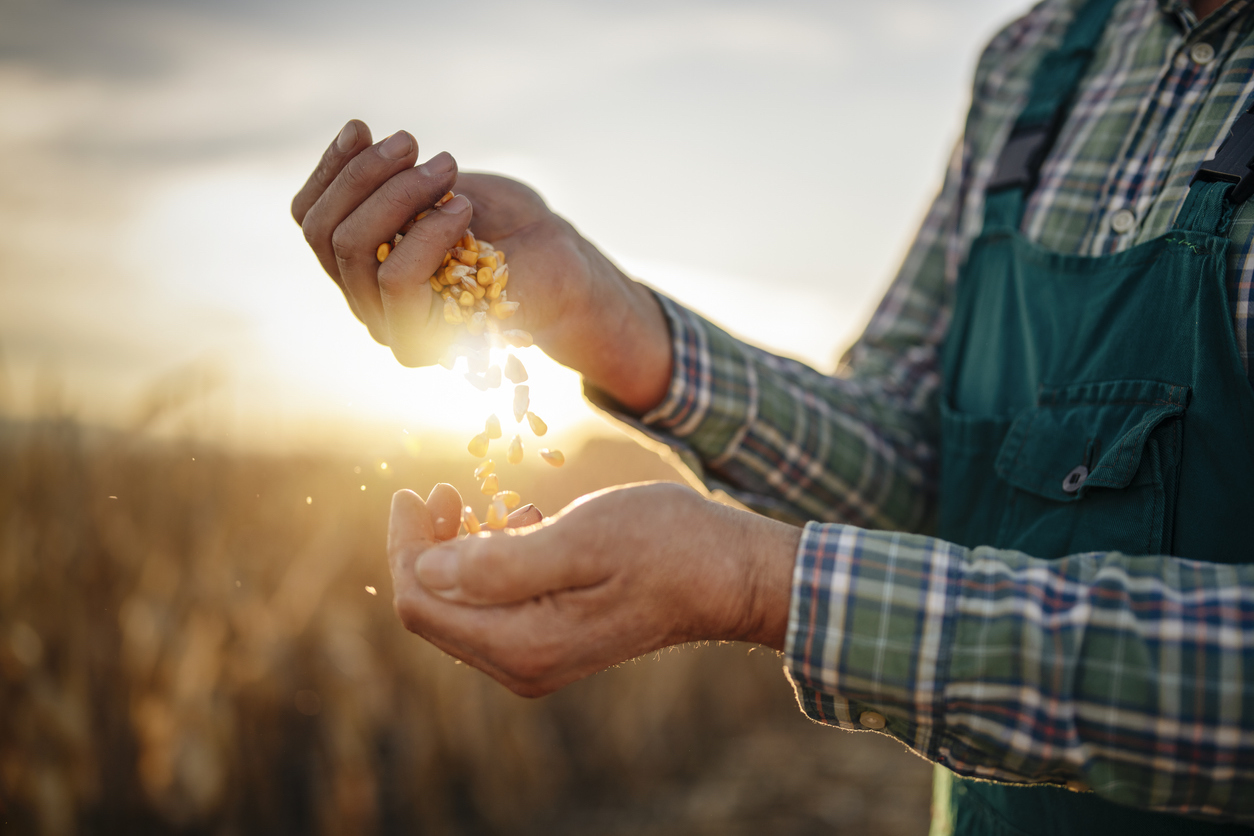
At first, farmers thought they were on to a good thing. They could now produce more food, and opted to cultivate the one crop that had the greatest profit potential for their soil and climate.
Another monocropping benefit to farmers was the perceived simplicity that saved them time and money, at least in the short-term. Focusing solely on a single crop meant the costs for seeds, equipment, fertilizer, and so on, remained relatively consistent over time, and farmers didn’t have to keep looking for new suppliers.
GMOs and Monocropping
As bioengineered (BE) crops (formerly known as GMOs), such as Roundup Ready corn, soybeans, and sugar beets hit the market, the pairing process got even simpler. The farmer had a standing order of glyphosate (one of the active ingredients in Bayer’s — formerly Monsanto’s — weed killer Roundup) that accompanied every purchase of BE seeds.
Harvesting also got much simpler, as a single machine designed specifically for corn, wheat, or beets could do the work of hundreds of human laborers.
The Emergence of Factory Farms
And last, but certainly not least among the perceived benefits of monocultures, monocrops became inextricably interlinked with a massive expansion in factory farming (or what the industry calls Concentrated Animal Feeding Operations, or CAFOs). Today, much of the world’s corn and soy are fed to livestock, not to humans. And CAFO-raised cows, pigs, and chickens represent an almost limitless market for these crops.
The overall result of monocropping, for the first couple of decades, appeared to be mostly positive — at least in terms of the goals of bringing the world more and cheaper calories and increasing the economic security of the farmers who provided it. But all those perceived savings came with hidden costs that added up over time.
Monocultures (and the Green Revolution in general) were promoted to increase the global food supply. While that’s happened, there have been several attendant negative consequences. (I’d say “unforeseen consequences” but I’m not sure that’s true. It didn’t take psychic powers to imagine the effects of a dietary pattern made up largely from factory farmed animal products and processed corn, soy, wheat, and palm oil replacing traditional diets.)
Economic Disadvantages of Monocropping for Farmers
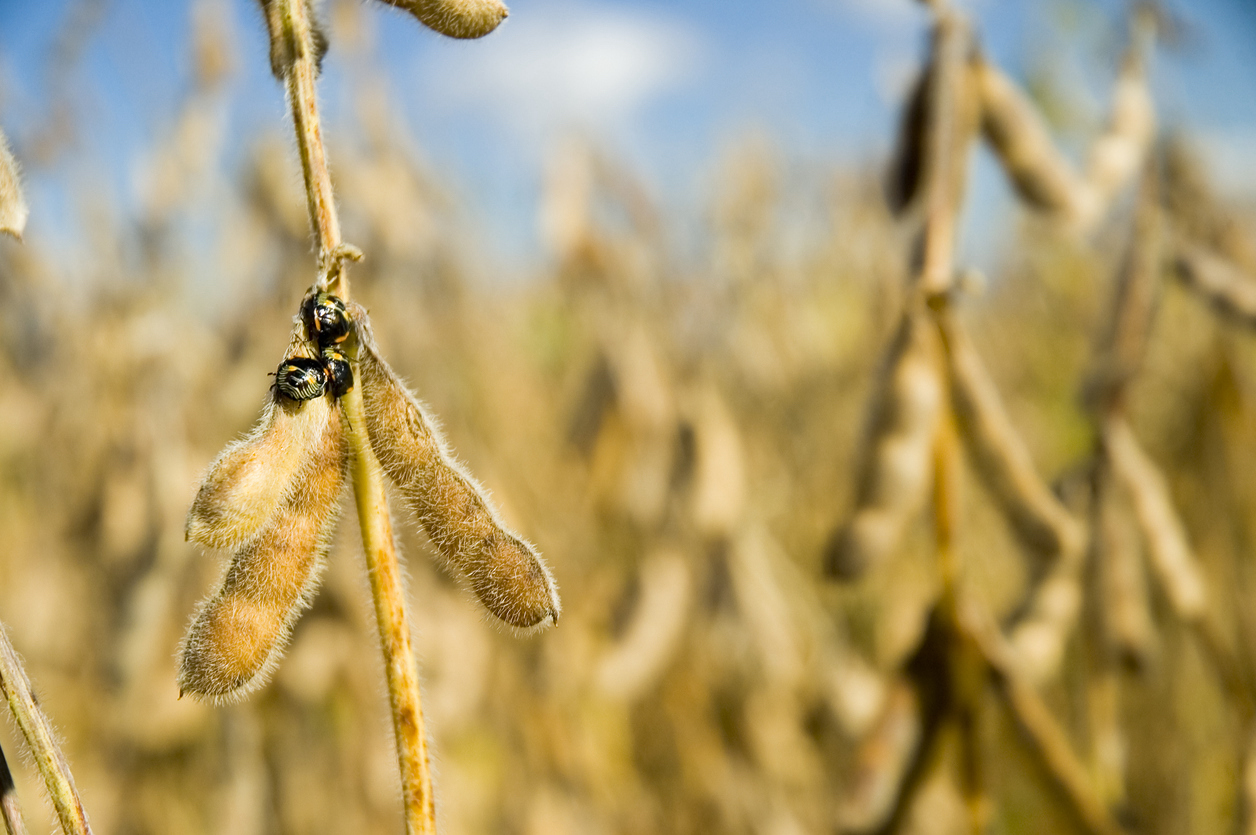
The fundamental issue with monocropping is the “all the eggs in one basket” problem. Crop failure is an inevitable part of farming. For myriad reasons that farmers can’t control (most of them falling under the categories of weather, pests, and disease), not all plants thrive and produce a bountiful and profitable harvest every single year.
In a biodiverse ecosystem, a threat to one crop may not be a threat to others. An infestation of stem borers can destroy summer squash but may leave eggplant untouched. An unexpected hail may crush corn and not bother beets.
But when fields contain just one crop, from genetically identical stock, every single plant is equally vulnerable to threat. A pest population can jump easily from one plant to another, especially when there are no other species of plants in between and when crops are planted close together for efficiency.
Monocropping Through History
To see the devastating results when a monocrop comes under threat, check out the history of the Irish potato famine of the 1840s, in which a single genetic variant of potatoes was wiped out by a water mold. The Irish people’s dependence on that variant for the majority of their calories meant that over a million people starved to death (an eighth of the entire Irish population), and millions more left the country as refugees.
The history books offer at least one more example of the dangers of relying on monocrops. The world’s most popular banana up until the 1950s was a variant known as Gros Michel. You can’t find a single one anymore, as the world’s supply was knocked out by a fungus that caused Panama disease, which led to banana wilt.
In response, banana producers turned to a less tasty variety, the Cavendish, which is the fruit we know today. Unfortunately, the banana industry didn’t learn its lesson, as the Cavendish comprises 99% of the world’s banana production, and is now under attack from a new variant of Panama disease called TR4. Dan Koeppel, author of Banana: The Fate of the Fruit That Changed the World, predicted in an NPR interview that the Cavendish could become extinct in the next 10–30 years.
A Trap for Farmers
Monoculture farming can become a trap for the farmers, who often have no choice but to keep purchasing the same seeds and biocides from their agribusiness vendors. Since the seed and agrochemical market was consolidated through mergers and acquisitions into just four main global players, these firms can exert monopolistic power over the farmers who depend on them for seeds and chemical inputs.
The result is increased costs and eroded profit margins for farmers. For example, the price of corn seed rose from under $27 per planted acre of seed to over $90 from 1990 to 2019, far outstripping the rate of inflation. And because monocrop corn farmers have invested so heavily in machinery and infrastructure for growing and harvesting corn, they can’t easily exercise free choice and move to another crop or growing model.
The consolidation of seed and supply companies into just a few global companies isn’t the end of the “bigger is better” story. Farms themselves are growing larger, by buying up competitors’ land or squeezing family farmers out of business. Bigger farms that buy at large scale are rewarded with favorable pricing, which makes it much harder for smaller farms to compete fairly in the marketplace.
Many farmers are forced to buy Bayer seeds and pesticides even if they don’t want to. When neighboring farms spray so much of the weed killer dicamba that the air turns hazy, those toxic clouds can waft for two to three miles, killing any soybean plants that aren’t bioengineered with dicamba-resistant genes — which is to say, any soybeans not made by Bayer.
Government Subsidies and Monocultures
Not coincidentally, crops produced in a monoculture system are often the same ones that are subsidized by the government (at taxpayer expense, of course). Subsidization is generally delivered in the form of insurance for farmers, guaranteeing that they can sell their crop above a certain price, no matter how low the actual market value for that crop falls. The primary subsidized crops in the US are corn, soy, wheat, and rice.
One out of every five dollars earned by US farmers comes directly from government payouts. These subsidies now buffer farmers not just from the threat of a bad harvest or market crash, but from any marketplace fluctuation. Without subsidies, it would be economic insanity to grow just one or two crops. If the price of corn dropped sufficiently, a farm that relied entirely or mostly on corn for its income could get completely wiped out in a single season.
Finally, subsidies tend to favor large farms, as government payouts often disproportionately go to the biggest producers.
Monoculture’s Impacts on the Food Supply & Food Insecurity
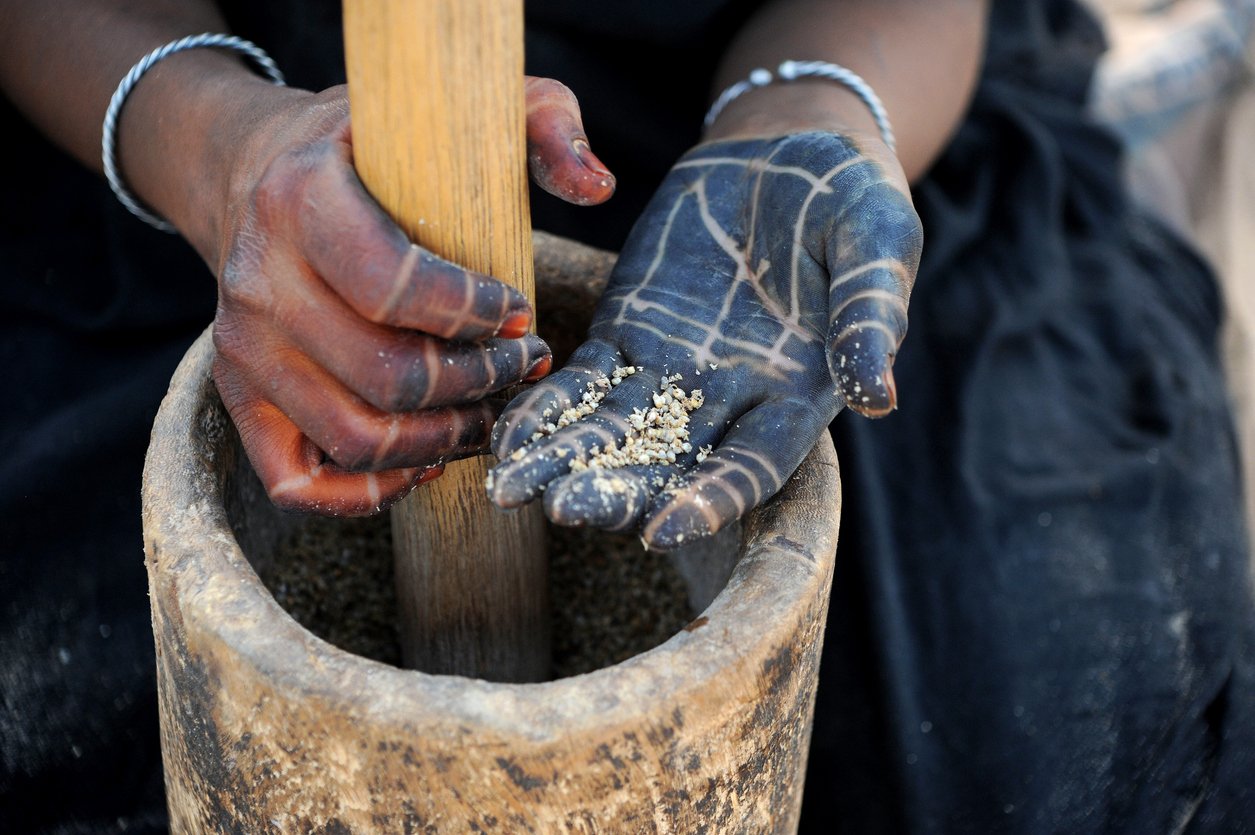
At a large scale, monocropping means that poor countries must compete with wealthy ones, in the open market, for a slice of the same global food supply. While traditionally a poor country might be able to grow its own food more cheaply, since wages were also lower, now the entire world bids for commodity crops, which places lower-income nations at a disadvantage.
Because the Green Revolution, in general, and monocropping, in particular, prioritizes efficiency over resilience, there’s very little slack in the system when anything goes wrong. And in agriculture, things often do go wrong. Shocks and uncertainties are part of the web of life, which is why nature builds redundancy and diversity into its design.
When humans decimate that diversity through monocropping, any event that leads to a diminished harvest has ripple effects, such as increasing food prices and bringing about greater food insecurity.
The COVID-19 Pandemic and Monocropping
We’ve seen this play out during the COVID-19 pandemic. The World Bank, a long-time supporter of industrialized agriculture at scale, has admitted that even before the pandemic, monocropped agriculture was collapsing. Here’s a remarkable sentence from an article on the World Bank’s website: “Even before COVID-19 reduced incomes and disrupted supply chains, chronic and acute hunger were on the rise due to various factors, including conflict, socio-economic conditions, natural hazards, climate change and pests.”
As the pandemic unfolded, the article continues, these already scarce resources became even more expensive, with the Agricultural Commodity Price Index increasing 25% from January 2021 to January 2022. Again, the global economically poor were getting priced out of access to food grown on their own lands, which replaced the diverse and healthful horticulture and subsistence practices that had fed their families for generations.
For example, monocropping has displaced regional staples, such as millet, sorghum, and cassava, all culturally and nutritionally important sources of calories throughout much of Africa, the Indian subcontinent, and South America. These foods have been part of traditional healthy diets for hundreds of years, and their displacement threatens global crop diversity.
Monoculture’s Impacts on Human Health
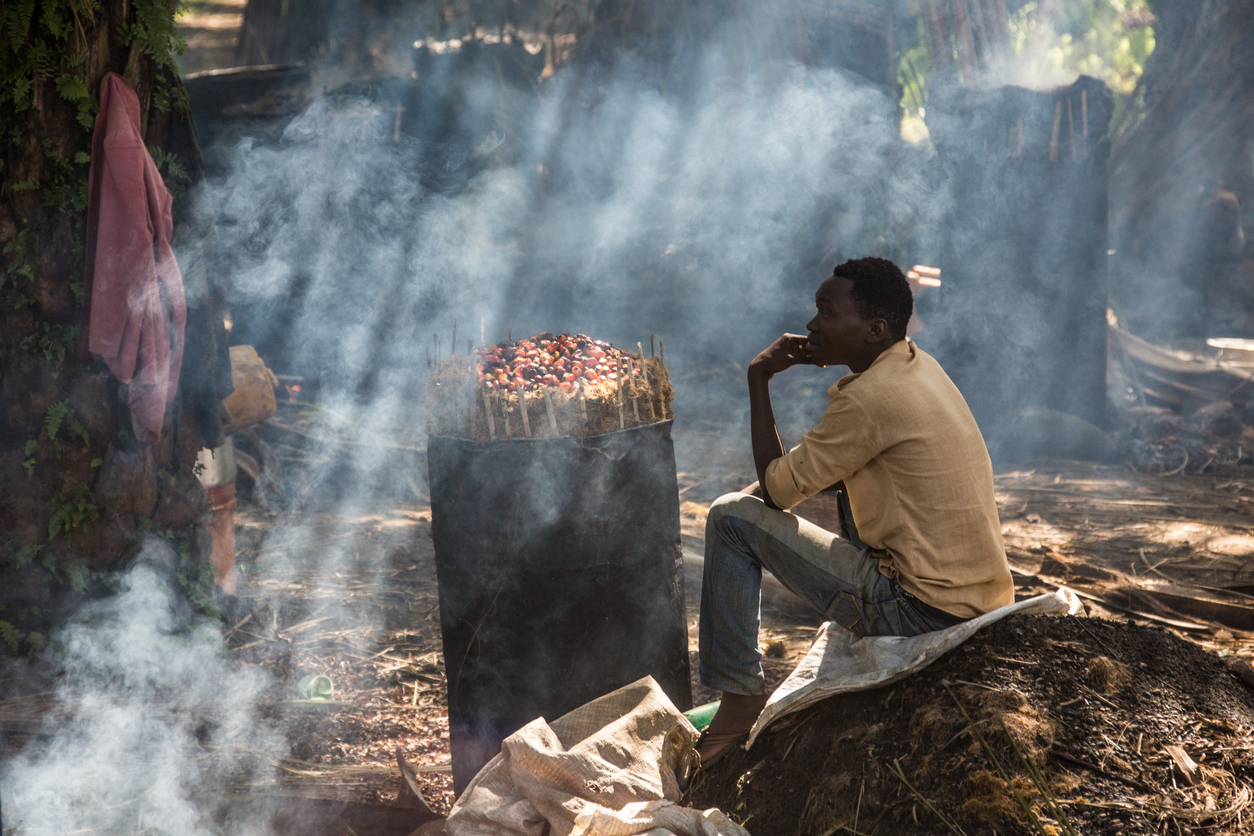
Human health also suffers when factory-farmed animal products and processed grains and oils replace traditional whole foods in our diets. Monocultures of corn and palm oil can produce more calories — but far less nutrition — per acre than many other crops. In a world of cheap calories from fractionated foods, malnutrition now refers as much to micronutrient deficiencies as to starvation.
A 2021 research paper on the effects of monocropping on the health of the economically poor highlights the scope of the problem in its first sentence: “Approximately 2 billion people globally are affected by micronutrient deficiencies; much of which is attributed to consuming a monotonous diet of nutrient-deficient staple crops.”
Researchers have also documented a relationship between the decrease in dietary diversity and a reduction in the diversity of the human microbiome, with accompanying health challenges. And once a particular strain of beneficial microbes goes extinct in a population, there’s a risk that it will never return.
Monocropping also makes it harder for farmworkers to lead lives of dignity, freedom, and security. As pests become resistant to pesticides, and weeds gain resistance to herbicides, agricultural chemical manufacturers have engaged in an arms race, increasing both the quantity and toxicity of chemical applications. While there’s some debate about how much exposure to these agents harms consumers, there’s no doubt that farmworker exposure to biocides is extremely hazardous.
Monoculture’s Impact on Children
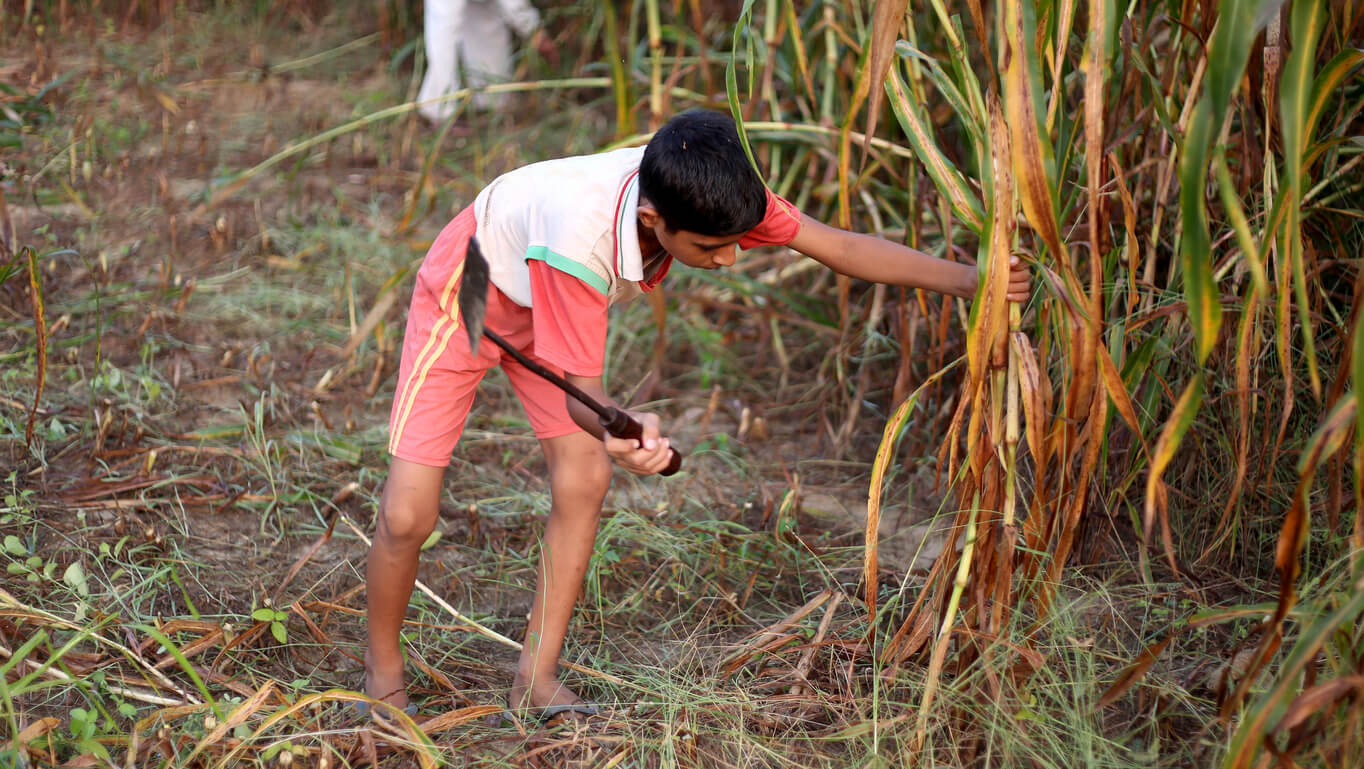
Children of mothers who work in pesticide-contaminated fields experience more neurological issues, cognitive impairment, and autism. Girls who grow up exposed to pesticides are at greater risk of infertility and breast cancer.
And throughout the world, children involved in monocropped agriculture, such as on oil palm plantations, are being exploited. Globally, millions of children and adults are essentially enslaved by their agricultural employers.
Environmental Impacts of Monocropping
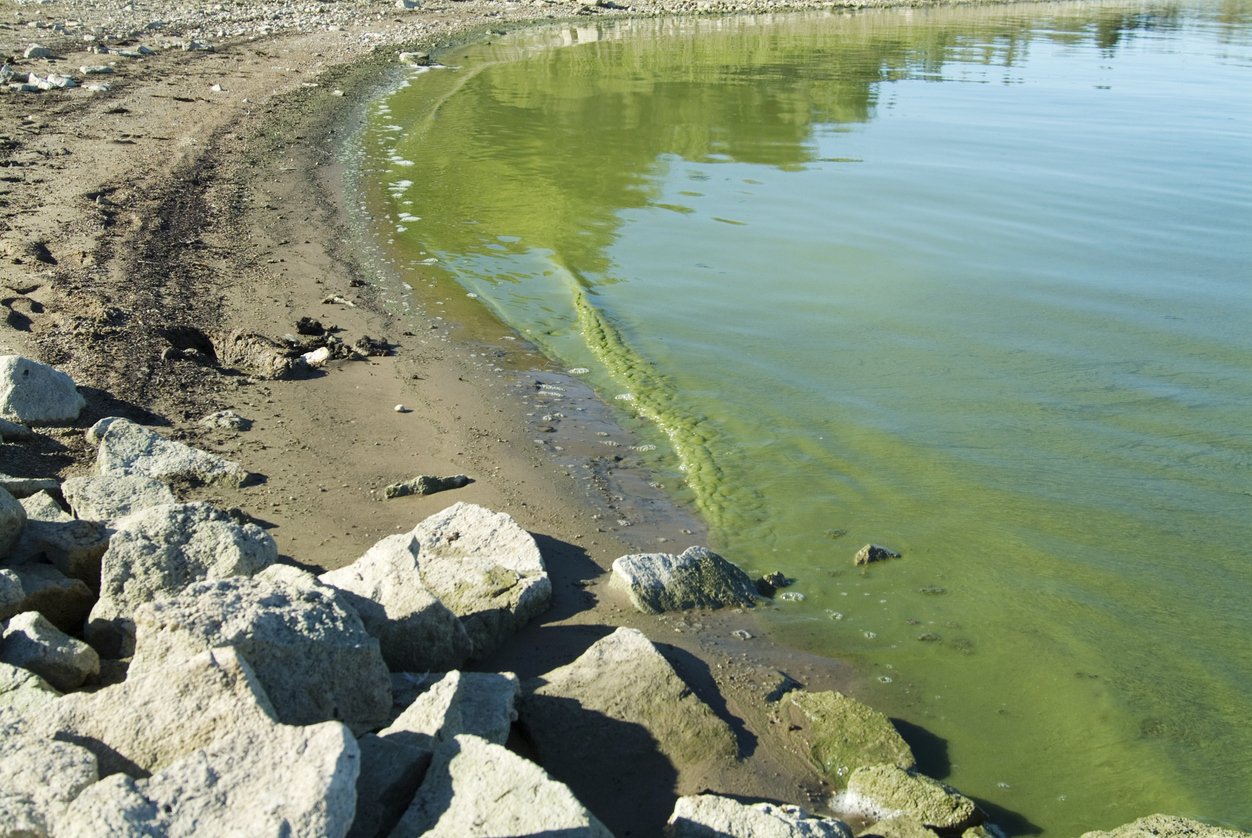
Humans aren’t the only species being harmed by monocropping. The practice is making the planet more susceptible to the ravages of climate change by eroding the land’s ability to retain soil and water.
A 2020 study published in the prestigious journal Nature reported that land used for agriculture or tree farms, which comprises 40% of all the non-ice-covered land on the planet, “… is less able to withstand fires, pests, and extreme weather events.” And since monocropping farmers lack the agility to shift their planting strategies in the face of climate change, they’re extremely vulnerable to these effects.
Pest and Weed Resistance
As we’ve seen, monocropping and pesticide use go hand in hand. But insects and weeds are rapidly developing resistance to the most widely used pesticides, which creates a vicious cycle — when bioengineered, pesticide-resistant crops fail, agribusiness has doubled down on the strategy by unleashing an “arms war” of increased and more diverse pesticide deployment.
This creates two additional problems. First, since the costs of losing the battle to a pest or pathogen can mean economic disaster for growers and consumers, there’s little appetite to risk alternative approaches to pest management that don’t involve all-out chemical warfare. Second, climate change means that new pests can now thrive in areas where they until recently had never been seen.
Effect on Pollinators
I’m sorry to say this, but it gets worse. According to a 2019 report by the United Nations’ Food and Agriculture Organization (FAO), monocropping, and the pesticide use that accompanies it, now threatens not just plant diversity, but pollinator diversity as well. According to the FAO, over one million species of plants and animals are endangered, including many insect pollinators without whose hard work we would be in real trouble. Of the 20 fastest growing crops in the world, 16 require pollination from insects or other animals. And the danger is not evenly distributed — the most affected countries are the emerging and developing nations in Africa, Asia, and South America.
Disrupts Water Supply
Monocropping also compromises our precious water supply. Fertilizers add nitrates, nitrites, and phosphates to our drinking water, as well as to other bodies of water. Nutrients leach out of our food supply and into water — which not only don’t benefit the ecology of rivers, lakes, and ponds but can harm them by creating the conditions for algal blooms that starve aquatic creatures of oxygen.
And impoverished monocropped soil is less able to absorb rainwater, leading to more flooding and more dependency on irrigation.
Decreased Soil Biodiversity
Fertilizers, pesticides, and factory farm waste also harm the ability of soil to sustain life. Monocrops keep adding the same things and depleting the same things, leading to less biodiverse, resilient, and mineral-rich soil (and more dependence on external inputs such as chemical fertilizers).
Monocropping reduces organic matter in soil and can cause significant erosion. This decreases the diversity and abundance of bacterial communities in soil, which in turn undermines plant health and ultimately the health of the humans who eat the plants.
Sustainable Alternatives to Monocultures
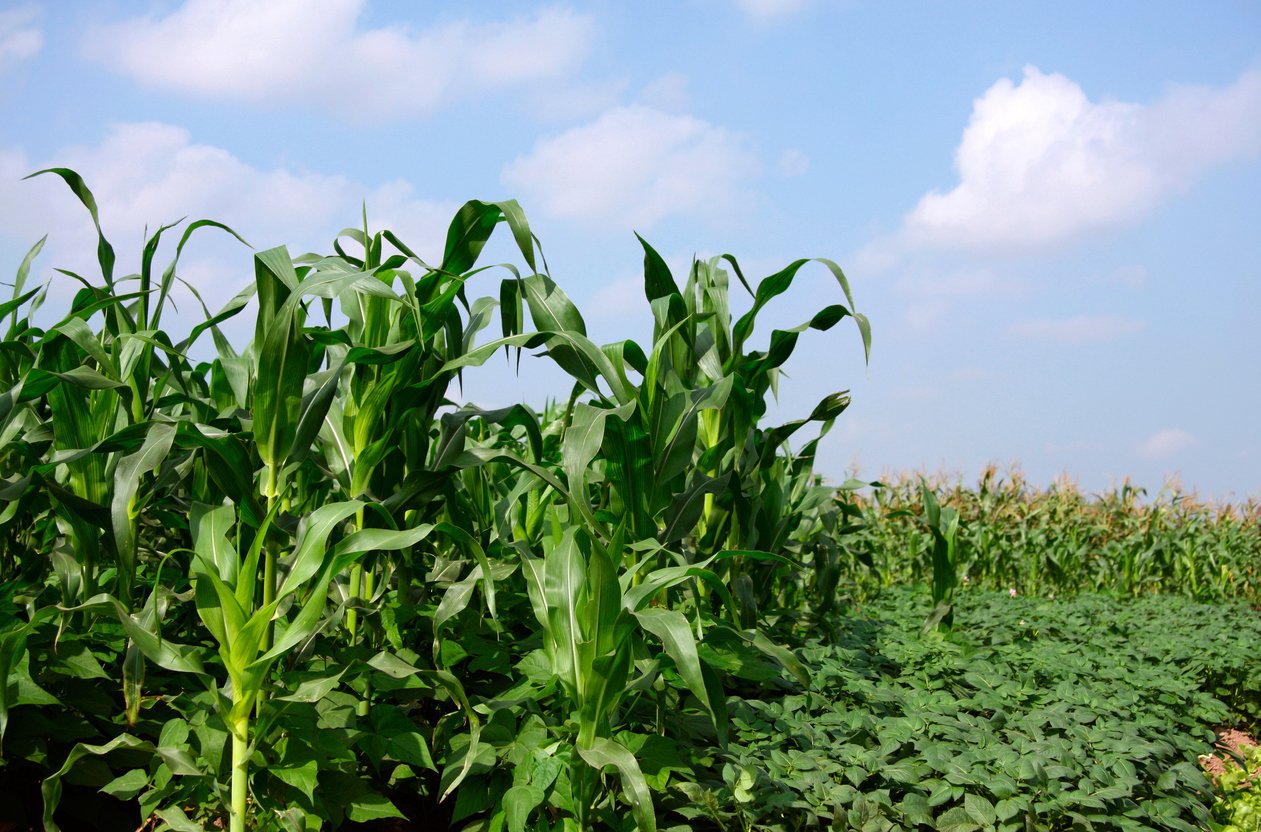
As scary and sad as all this is, there’s some good news that’s also part of the story — we know how to grow food in ways that heal rather than harm the earth and ourselves.
Regenerative Agriculture
What’s known as regenerative agriculture, and millennia-old, indigenous growing ways, prioritize practices that mimic natural ecological processes and promote biodiversity. Shifting to regenerative agricultural processes is also one of the most powerful levers at our disposal to combat human-caused global climate chaos.
Regenerative farming focuses on the health of the soil as a top priority. Unlike monocropping, which sacrifices long-term soil health for the short-term production of marketable crops (did none of these scientists or policy makers encounter the story of “the Goose Who Laid the Golden Egg” as a child?), responsible land stewards treat the soil as their primary asset, which produces wealth in the form of food year after year.
Regenerative practices have been shown to enhance soil health, increase soil-based carbon stores (which is good for the climate as well as the plants growing in that soil), improve the physical structure of the soil so that it can hold more carbon, water, and oxygen, and boost soil biodiversity.
Intercrops, Cover Crops, and Polyculture
Other examples of sustainable growing include intercropping — planting more than one crop in a field — and polycultures, which means planting multiple crops together that all help each other grow better.
A well-known example of such a polyculture is the “3 Sisters” of South and Central America: corn, beans, and squash. Planted together, all three do much better than any one on its own. The squash puts out big leaves that outcompete weeds, but only after the corn and beans have grown taller than the squash leaves. The corn provides a frame upon which the beans can climb. And the beans, like all legumes, fix nitrogen in the soil for the other two sisters. The result is healthier plants and higher yields without the need for so many (or any) chemical fertilizers and herbicides.
Another technique, planting cover crops on part of the land to serve as “green manure” for other crops, adds nutrients and reduces the need to import fertility from outside the farm.
Integrated Pest Management
A sophisticated method of dealing with insects that eat crops, integrated pest management (IMP) also mimics nature, which doesn’t try to eliminate species entirely but keeps them in check through predation. Rather than killing life and reducing biodiversity, IMP takes the opposite approach, nurturing the presence of organisms that prey on the critters that prey on the crops.
Agroforestry
Nature, of course, doesn’t grow food in rows, but produces its bounty in meadows, orchards, glens, jungles, and forests. All these ecosystems are characterized by robust biodiversity that’s expressed in vertical layers, with roots, ground cover, shrubs, bushes, short trees, and tall trees all sharing the sun, soil, and rain to their collective benefit. Agroforestry is an approach to growing crops that mimics the design and function of a grove, with crops and trees interplanted.
While there is always more to learn, and there are many new breakthroughs to be had, this isn’t entirely new science. Indigenous farmers have been refining these techniques for millennia, to protect their crops from extreme weather events, maximize the resources that can be harvested from a single location (legumes and lettuce and lumber, oh my!), increase soil fertility, and store carbon.
Indigenous farmers also save and treasure many varieties of each crop, which increases the odds that any disease that attacks a particular strain won’t be able to destroy the entire crop. And the genetic variability also provides nutritional and usage variability, so the community can get far more from its arable land than a single crop would provide. This approach truly provides the farmers with land for life, rather than cash crops for a few seasons.
What Can You Do as a Consumer?
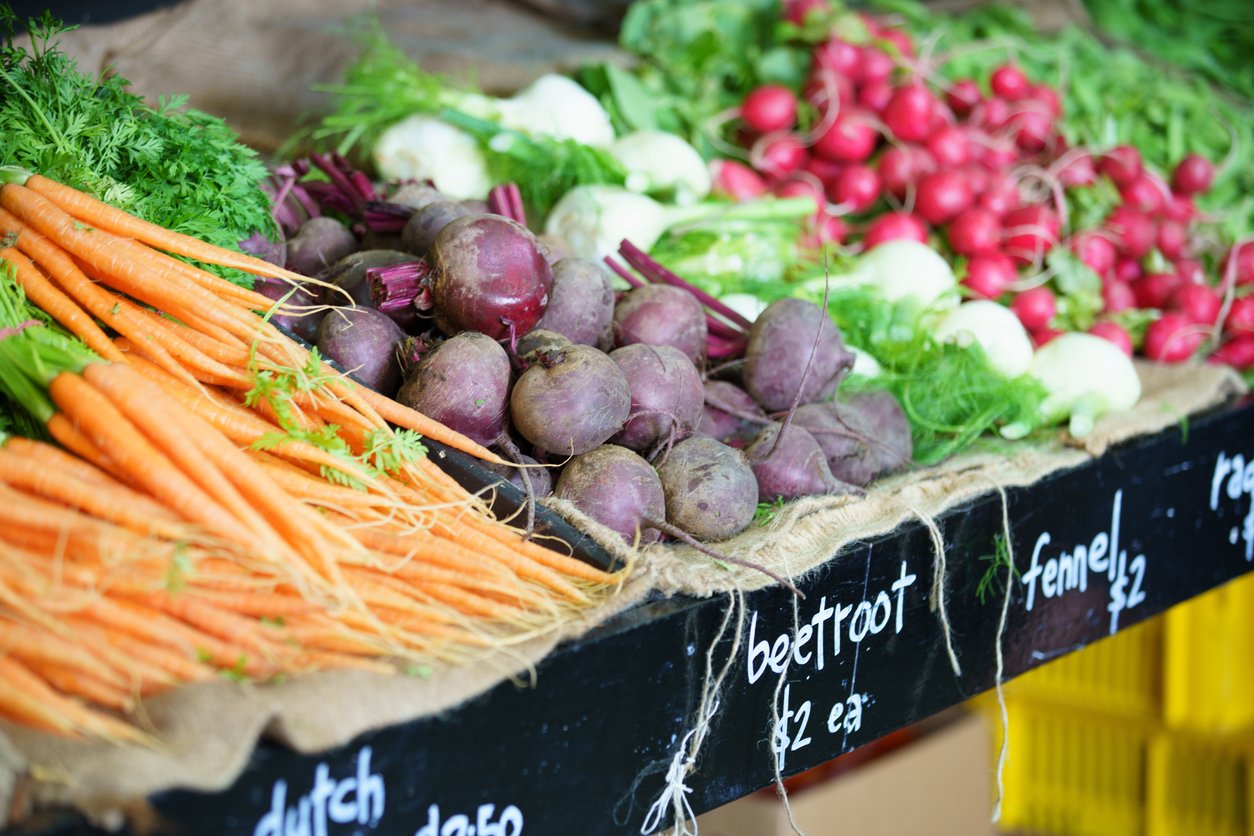
Given the urgency of our collective generational challenge — to produce food sustainably and ethically so that all may be fed — what can each of us do to participate in the shift from industrial monocropping to regenerative agriculture?
At a personal level, we can start by directing our hard-earned money towards foods that align with our values.
1. Eliminate Factory Farmed Meat and Dairy
A strategy with a particularly big impact is to steer clear of industrially produced animal products such as meat and dairy. That’s because much of the monocropped and bioengineered corn and soy grown around the world goes to feed livestock.
2. Cut Down on Processed Foods
You can also say no to monocropping by reducing your purchases of processed foods, especially those made with palm oil, non-organic corn, and soy by-products. This isn’t as simple as looking for “corn” or “soy” on a food label: corn by-products can hide behind words like maltodextrin, sorbitol, and fructose (here’s a primer on avoiding these substances in packaged foods), while soy can be found in mono- and diglycerides and monosodium glutamate, among many other sources.
3. Buy Sustainable and Ethically Sourced Food
If that’s what not to buy, what shopping strategies encourage more environmentally friendly and regenerative methods of growing food? As much as possible, buy a diversity of locally grown, non-BE, fair trade, and organic produce. The good news is, most of the world’s farms are still small and family-run, and typically don’t grow crops in monocultures. Smaller-scale farms are more likely to practice composting and other sustainable methods that reduce soil erosion and in some cases, even sequester carbon into the ground.
4. Shop Local and Small
To really increase your odds of supporting an environmentally responsible farm, frequent your local farmers market, support a nearby farm stand, or join a CSA (community supported agriculture) collective. It’s a great way to connect with small-scale folks who are more likely to practice crop rotation, companion planting, and other sustainable techniques. You can ask them how they grow their food and learn about what they are doing, too. A lot of thoughtful farmers love to be seen for, and to brag about, the good things they do. And by spending money within your local economy, you help your community become more abundant.
5. Go Organic
Buying organic can be another way to steer clear of monocrops, as organic farming methods are typically not compatible with monocropping. While some large-scale organic operations may adopt aspects of monocropping for certain crops, this is more often the exception than the rule.
The majority of organic farms are practicing polyculture and crop rotation, prioritizing soil health, and using cover crops. And by definition, they also can’t use most conventional pesticides or bioengineering, so overall their farming practices tend to be better for people and the environment.
6. Grow Your Own Food
You can also lead by example by growing some of your own food. It’s a great way to reduce or eliminate your reliance on industrial agriculture in all its problematic forms. You’ll also buffer yourself from future disruptions in the world’s food supply such as we saw during the early months of the COVID-19 pandemic.
If you have a lawn, you’re actually tending your own tiny monoculture of grass. You can show your neighbors (and yourself) what’s possible by turning that lawn into something more diverse and useful. You can grow food, or you might also plant a pollinator garden, grow food for birds, or sequester carbon by planting small trees. All of these options can improve the health of the soil and give a hand to your local wildlife.
Say No to Monocropping
Monocropping is an unsustainable farming system that has serious negative impacts on farmers, farmworkers, society, and the environment. What began as a proposed solution to world hunger turned into a race for ever-higher yields and short-term profits.
For humans and the environment to thrive, we need to shift to farming methods that are sustainable and even regenerative, putting more back into the soil than we extract.
And all of us can play an important part by not buying food produced using monocropping methods on large-scale industrial farms — instead supporting local, small-scale, and organically produced food.
Save 10% and get free shipping with a subscription!Fight viruses, remove heavy metals and microplastics, and restore your gut all at once with
Humic and Fulvic Acid from Ascent Nutrition.
MUST HAVE DETOX POWERHOUSE!
Stillness in the Storm Editor: Why did we post this?
The news is important to all people because it is where we come to know new things about the world, which leads to the development of more life goals that lead to life wisdom. The news also serves as a social connection tool, as we tend to relate to those who know about and believe the things we do. With the power of an open truth-seeking mind in hand, the individual can grow wise and the collective can prosper.
– Justin
Not sure how to make sense of this? Want to learn how to discern like a pro? Read this essential guide to discernment, analysis of claims, and understanding the truth in a world of deception: 4 Key Steps of Discernment – Advanced Truth-Seeking Tools.
Stillness in the Storm Editor’s note: Did you find a spelling error or grammatical mistake? Send an email to [email protected], with the error and suggested correction, along with the headline and url. Do you think this article needs an update? Or do you just have some feedback? Send us an email at [email protected]. Thank you for reading.
Source:
https://foodrevolution.org/blog/monocropping-monoculture/
Support our work! (Avoid Big Tech PayPal and Patreon)DIRECT DONATION
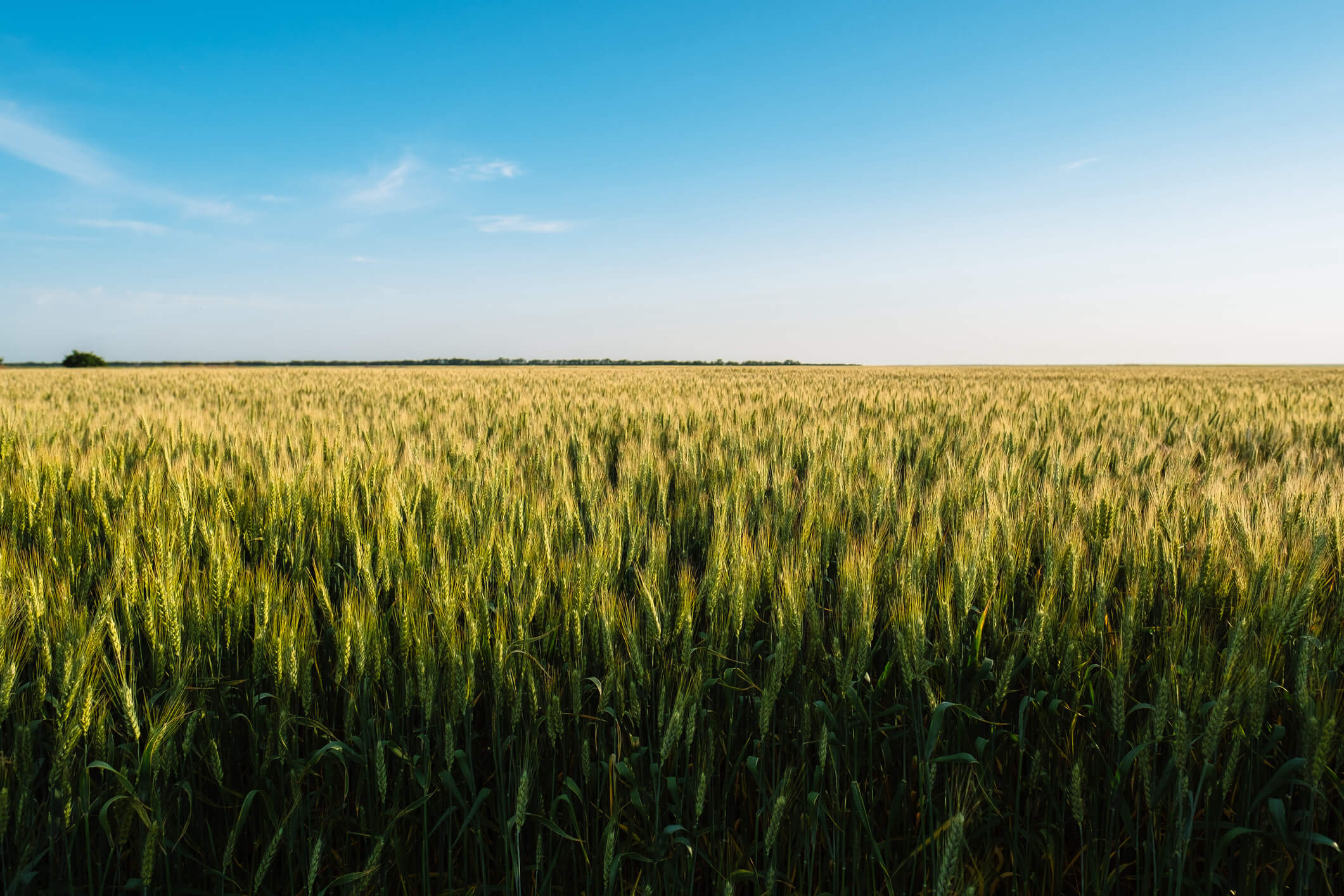
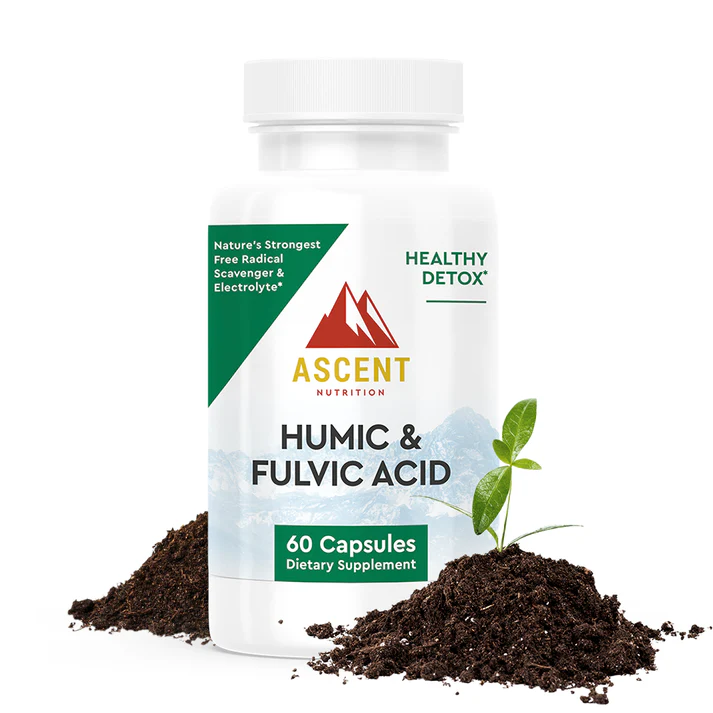
Leave a Reply